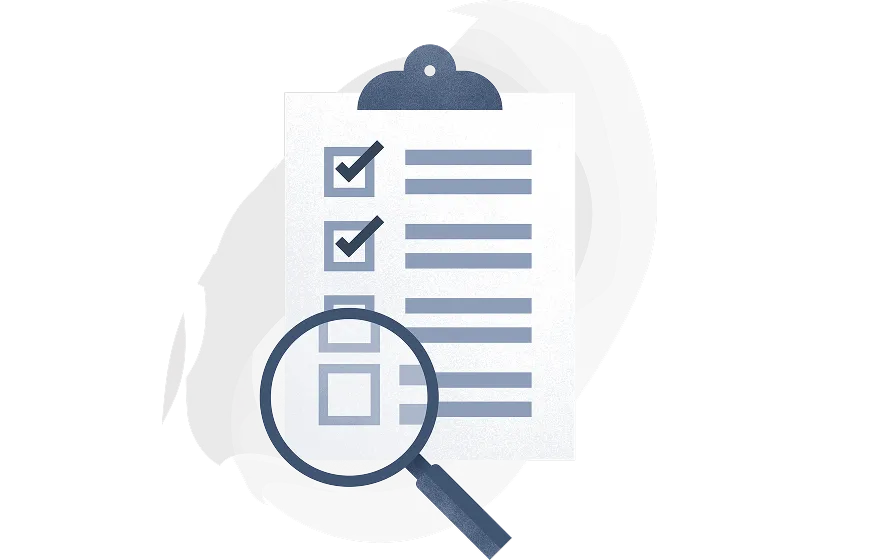Unexpected medical bills can create real financial stress. Even if you have savings, some costs — like emergency procedures, ongoing treatment, or specialist visits — can quickly outpace what you have on hand. For many people, a 401(k) hardship distribution becomes a lifeline, allowing them to access funds from a qualified retirement plan in times of urgent need.
But before you reach for that retirement account, it’s important to understand that not all costs qualify, and the rules are strict: the Internal Revenue Service (IRS) requires that withdrawals be used for expenses that are necessary and unavoidable.
Knowing which expenses meet the criteria and understanding how paying income tax works on these distributions can make it easier to decide if tapping into your qualified retirement plan is the right move.
401(k) hardship withdrawal: A brief overview
A 401(k) hardship withdrawal is when an employee takes an early distribution from their retirement savings to cover a qualifying need — like certain medical expenses.
Unlike a standard withdrawal, which can be made at any age but may come with penalties, a hardship withdrawal is tightly regulated to ensure funds are only used for serious, immediate financial needs. That means you can’t simply use the money for routine check-ups or elective treatments—your withdrawal has to be justified by a real financial hardship.
What medical expenses qualify for a 401 (k) hardship withdrawal?
There’s no set list of approved medical expenses for a hardship distribution. Instead, the IRS — and plan sponsors – look at whether the costs are essential for medical care, not optional or elective. The key is that the expenses must be necessary and unreimbursed.
Medical costs that qualify for a 401(k) hardship withdrawal often include:
- Out-of-pocket medical bills: Any medical expenses not covered by insurance may qualify. This includes hospital bills, doctor visits, lab tests, and prescription medications.
- Long-term care costs: Expenses for ongoing medical care, such as physical therapy or in-home nursing care, may qualify.
- Medical equipment: Items like wheelchairs, hearing aids, or other prescribed medical devices can count if they are essential for health.
- Dental and vision care: Uncovered dental procedures, orthodontics, or corrective eye surgery may be eligible.
Additionally, the IRS states that, to be approved, the withdrawal amount must be sufficient to cover the need and that the employee has no other means of obtaining the funds.

Who counts for medical hardship withdrawals?
The IRS allows withdrawals to cover medical expenses not only for yourself but also for your immediate family. This includes:
- Your spouse
- Your children
- Any dependents for whom you claim a tax exemption
This means if your spouse needs surgery or your child requires specialized treatment, your 401(k) funds could potentially be used to cover those costs. Keep in mind, though, that all expenses must be documented and necessary.
Taxes and penalties
One of the most important considerations before taking a hardship withdrawal is taxes. While the money comes from your own contributions (and sometimes from employer contributions), withdrawals are generally subject to income tax. This means the amount you withdraw could be added to your taxable income for the year.
Additionally, if you are under age 59½, the IRS usually imposes a 10% early withdrawal penalty. However, there are exceptions for certain medical expenses: if your unreimbursed medical costs exceed 7.5% of your adjusted gross income, you may be able to avoid the penalty.
Is it a good idea to take a hardship withdrawal for medical expenses?
A 401(k) hardship withdrawal can be a lifesaver in a medical emergency, but it’s not something to use lightly. Pulling money from your account can shrink your retirement savings over time, and even a small withdrawal can slow down your compounding interest and make it harder to “catch up” later.
That’s why it’s usually best to consider a hardship withdrawal only when it’s truly necessary—when you don’t have other ways to cover the costs. Before you tap into your 401(k), see if options like payment plans with your doctor, personal loans, or an HSA could help instead.
Think of a hardship withdrawal as a tool for emergencies, not a long-term fix. Using it carefully means you can handle today’s medical expenses without putting your future retirement at too much risk.
How to submit a hardship withdrawal
Here are the steps to take to fill out a hardship withdrawal at work.
- Step 1: Check your plan rules: Not all 401(k) plans allow hardship withdrawals, so verify with your plan administrator.
- Step 2: Document your expenses: Keep detailed records, including bills, receipts, and insurance statements.
- Step 3: Determine the amount needed: Withdraw only what is necessary to cover the unpaid medical costs.
- Step 4: Fill out and submit the forms. When you’re ready, complete your company’s forms, attach the required documentation, and submit them to your employer.
- Step 5: Understand tax implications: Consider speaking with a tax advisor to estimate income taxes and potential penalties.
Keep in mind that applying for a 401(k) hardship withdrawal doesn’t guarantee approval. It will ultimately depend on your plan administrator’s policies and what they’ll permit.
Alternatives to a hardship withdrawal
Before tapping into your next egg, it’s best to explore your options. Here are several alternatives worth consideration:
- Health savings accounts (HSA): If you have one, HSAs can be used tax-free for qualified medical expenses.
- Payment plans with providers: Many hospitals and clinics offer flexible financing options for large bills.
- Local resources and nonprofit organizations: There are many organizations, such as 211 and the Patient Advocate Foundation, that help people connect with the resources they need to cover medical expenses. These resources include grants, co-pay relief programs, financial aid, and more.
- Employer advances or assistance programs: Some employers offer emergency support for employees facing medical costs.
- Personal loans: You’ll receive a fixed interest rate and repay the loan in equal monthly installments over a set term. These may have lower penalties than early 401(k) withdrawals.
- 401(k) loans: Borrowing from your own 401(k) through a loan can give you access to funds without the early withdrawal tax penalties, as long as you repay it on schedule.
- Home equity line of credit (HELOC): A flexible way to borrow against your home’s equity for a revolving line of credit, often with lower interest rates than personal loans.
- Home equity loan: Provides a lump sum that can help cover large medical expenses, with fixed repayment terms.
- Home equity investment (HEI): Lets you access a portion of your home’s equity without monthly payments, giving you cash for urgent expenses. Repay the investment plus a percentage of the home’s appreciation (change in value, not total home value) anytime during a flexible 30-year term when you sell the home, refinance, or use another source of funds.
Exploring these options first can help you cover urgent medical costs while keeping your retirement savings intact for the future.
Frequently asked questions
Is a 401(k) loan better than a hardship withdrawal for medical costs?
A 401(k) loan is often a better choice than a hardship withdrawal if you can realistically repay it. With a loan, you’re borrowing from your own retirement savings, so the money isn’t permanently gone, and you avoid the early withdrawal penalties and immediate income tax that come with a hardship distribution.
A hardship withdrawal, by contrast, permanently reduces your account balance and can slow your long-term retirement growth because you lose out on compounding interest. Hardship withdrawals are generally best reserved for situations where you truly have no other way to cover urgent medical costs.
Do I have to prove the medical expenses are immediate and necessary?
In most cases, to qualify for a hardship distribution, your employer will require you to submit documentation that demonstrates you have immediate financial needs beyond what your insurance plan covers.
Why would a hardship withdrawal be denied?
A hardship withdrawal would be denied if your employer doesn’t allow them or if you don’t submit enough documentation to prove that you urgently need financial help. It might also be denied if you don’t have adequate funds in your retirement account to cover your emergency.
Are dental expenses eligible for a hardship withdrawal?
Emergency dental expenses can count for hardship withdrawals if you’re able to provide documentation to prove to your employer that the medical care is emergent, necessary, and that you’re not able to pay for the expenses in any other way. As mentioned, every 401(k) plan is different, so confirm with your HR department or employer to find out whether or not your plan covers dental emergencies.
Are medical expenses for family members eligible for a hardship withdrawal?
Yes, many people don’t realize that you can make an approved hardship withdrawal for your spouse, children, or other dependents if necessary. Contact your employer, HR department, and plan administrator to seek clarification.

Final thoughts
If you’re not able to pay for a serious medical issue out of pocket, you may be able to use a 401(k) hardship withdrawal to pay for your costs. However, there are drawbacks to doing so, including lost future investment earnings and potentially a 10% tax penalty.
Fortunately, you have a few options for covering unexpected and serious medical expenses, including personal loans, payment plans, and leveraging assets such as your home equity.
If you’re interested in learning more about home equity investments and how you can get a lump sum without having to make monthly payments, visit Point.com.
No income? No problem. Get a home equity solution that works for more people.
Prequalify in 60 seconds with no need for perfect credit.
Show me my offer
Frequently asked questions

Thank you for subscribing!
.webp)















